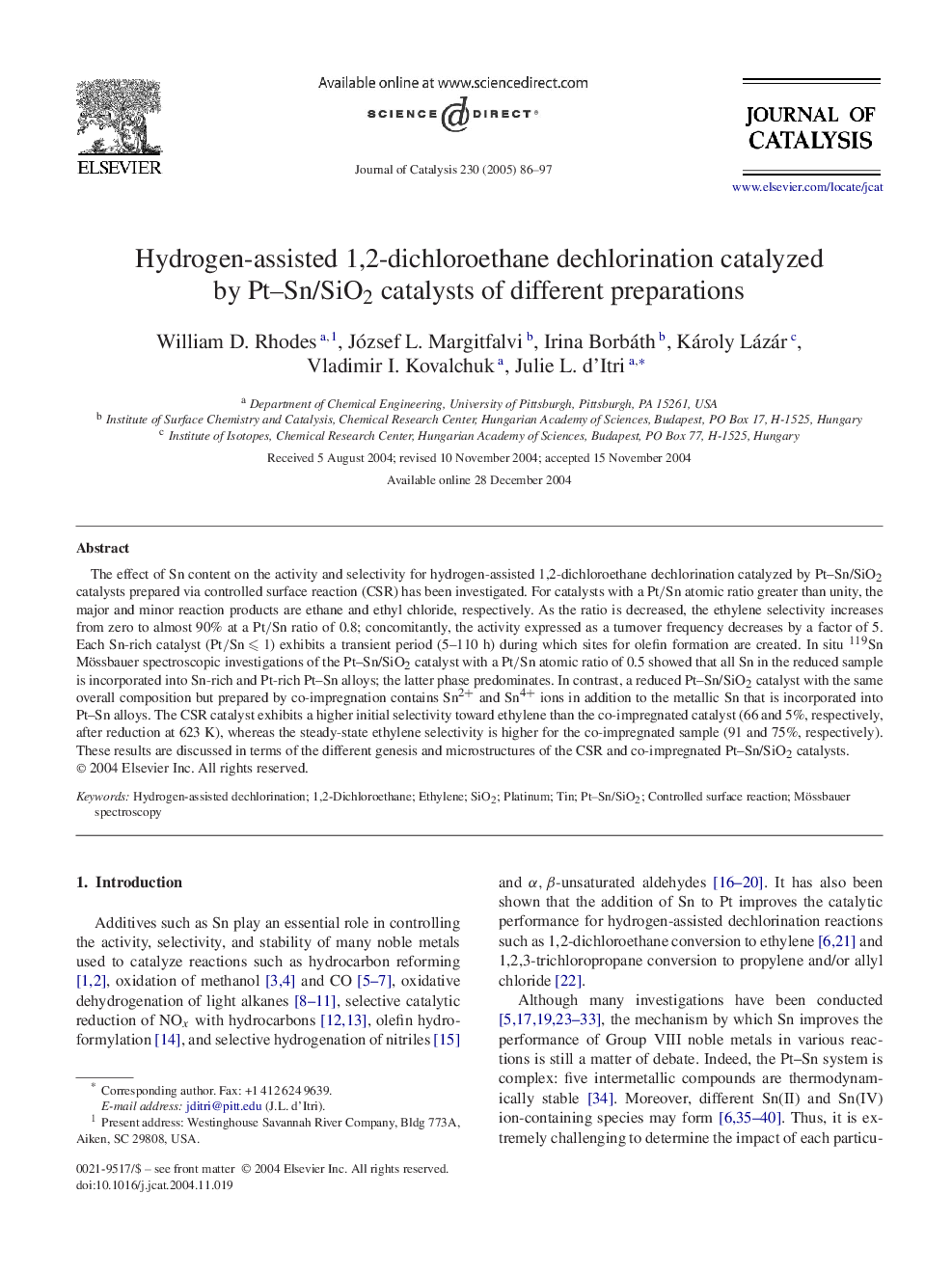| Article ID | Journal | Published Year | Pages | File Type |
|---|---|---|---|---|
| 10244531 | Journal of Catalysis | 2005 | 12 Pages |
Abstract
The effect of Sn content on the activity and selectivity for hydrogen-assisted 1,2-dichloroethane dechlorination catalyzed by Pt-Sn/SiO2 catalysts prepared via controlled surface reaction (CSR) has been investigated. For catalysts with a Pt/Sn atomic ratio greater than unity, the major and minor reaction products are ethane and ethyl chloride, respectively. As the ratio is decreased, the ethylene selectivity increases from zero to almost 90% at a Pt/Sn ratio of 0.8; concomitantly, the activity expressed as a turnover frequency decreases by a factor of 5. Each Sn-rich catalyst (Pt/Sn ⩽ 1) exhibits a transient period (5-110 h) during which sites for olefin formation are created. In situ 119Sn Mössbauer spectroscopic investigations of the Pt-Sn/SiO2 catalyst with a Pt/Sn atomic ratio of 0.5 showed that all Sn in the reduced sample is incorporated into Sn-rich and Pt-rich Pt-Sn alloys; the latter phase predominates. In contrast, a reduced Pt-Sn/SiO2 catalyst with the same overall composition but prepared by co-impregnation contains Sn2+ and Sn4+ ions in addition to the metallic Sn that is incorporated into Pt-Sn alloys. The CSR catalyst exhibits a higher initial selectivity toward ethylene than the co-impregnated catalyst (66 and 5%, respectively, after reduction at 623 K), whereas the steady-state ethylene selectivity is higher for the co-impregnated sample (91 and 75%, respectively). These results are discussed in terms of the different genesis and microstructures of the CSR and co-impregnated Pt-Sn/SiO2 catalysts.
Related Topics
Physical Sciences and Engineering
Chemical Engineering
Catalysis
Authors
William D. Rhodes, József L. Margitfalvi, Irina Borbáth, Károly Lázár, Vladimir I. Kovalchuk, Julie L. d'Itri,
